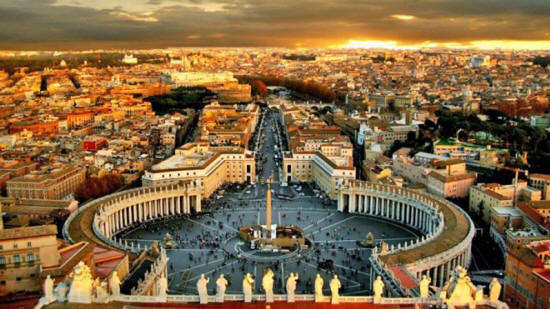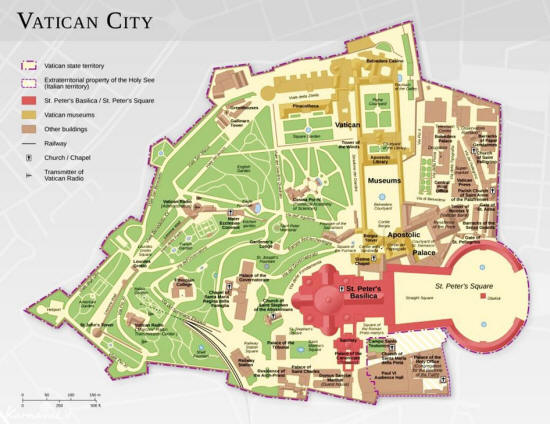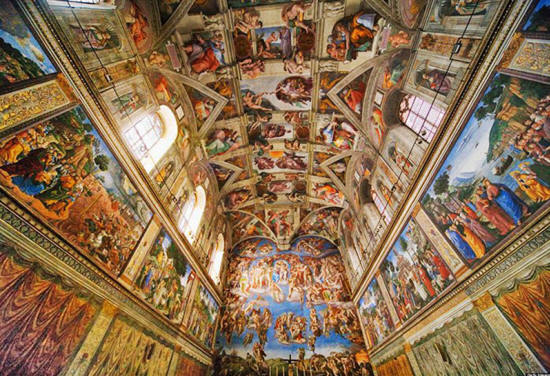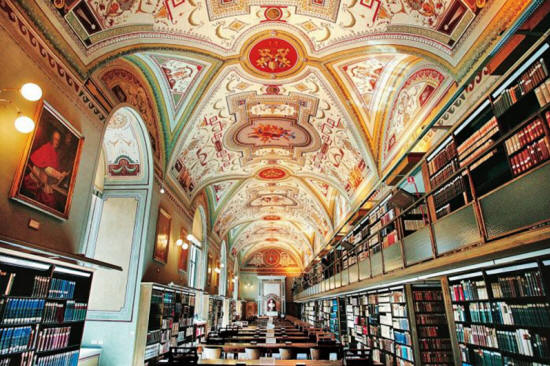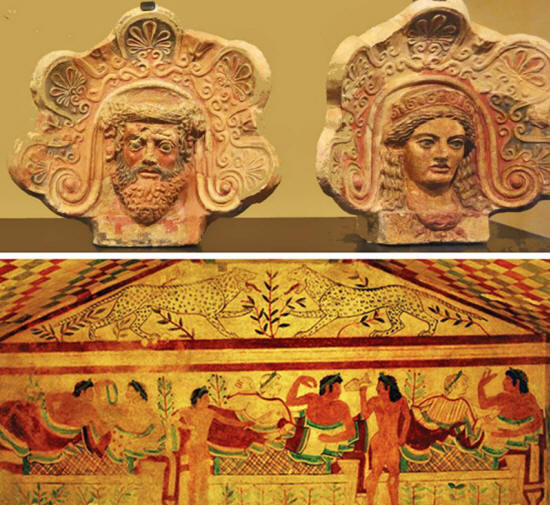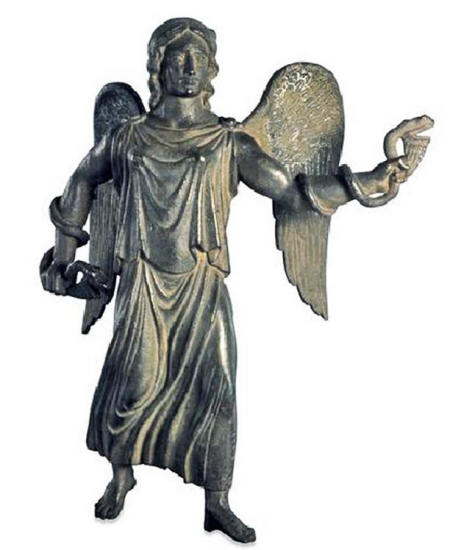|
Vatican City Image credit: History Cooperative
We are today so used to
the name that we hardly think about how the Vatican got its name.
The truth is that the name Vatican is neither Latin nor Greek and it
cannot be traced to the Bible either.
As you are about to find
out, the name "Vatican" predates Christianity and is shrouded in
mystery.
highlighting notable buildings and the Vatican gardens. Image credit: Wikipedia
Inside The Vatican
City State
Located in Rome, Italy, it is the world's smallest independent country by both population and area. The city has a population of around 840 and an area of approximately 108 acres (44 hectares).
The Vatican is a symbol of the Roman Catholic faith and its power and influence on religious people cannot be denied and the Holy See's authority extends over Catholics throughout the world.
The Vatican is famous for its beautiful buildings such as the Sistine Chapel, St. Peter's Square and St. Peter's Basilica. The Vatican Museums are filled with masterpieces of painting, sculpture and other works of art collected by the popes through the centuries.
The Vatican Apostolic Library, is located inside the Vatican Palace.
Courtesy of Wikimedia Commons.
In 2014, the Vatican
Library had 4,000 ancient manuscripts available online for free.
Image
credit - Fabio Frustaci/Eidon/Zuma
In 1881, Pope Leo XIII allowed scholars to visit the private archives for the first time and in modern times it's possible to get access to the documents, but outsiders must know what they are looking for because with 52 miles of shelves in the archives, the librarians prohibit browsing.
It has nothing to do with
the Bible, Greek language or Latin. As many other Christian
traditions and customs, the name we associate with the Church has a
pagan origin.
More than twenty-eight
centuries ago, and before the legendary founding of Rome by Romulus
and Remus, there was a people called
the Etruscans.
In the Etruscan world, women, unlike their contemporaries in Greek civilization,
enjoyed great freedom.
In facts, most of the
knowledge we possess about the Roman civilization comes from the
Etruscans.
She was the goddess of
the Underworld and it was her duty to keep a watching eye on
those who had passed away.
Treatment of the
deceased's remains was important for survival and successful journey
to next life.
Etruscan, 425-400 BC Found near Mount Vesuvius, Campania, Italy
Image
credit - Hamiton Collection
Vanth was usually depicted with wings and had bearded snakes entwined around her arms.
According to Etruscan mythology, Vanth attended from the moment of death until entry into the Underworld.
The name was not only associated with the goddess of the Underworld. Vatika was also a bitter not well-tasting grape used by peasant to produce cheap wine.
The grape as well as a weed with the same name grew on the slope. When people ate it, they experienced hallucinations and the word passed on into Latin as a synonym for "prophetic vision".
The Latin word
vaticinor means "foretell, prophesy" from vatis "poet,
teacher, oracle".
|


